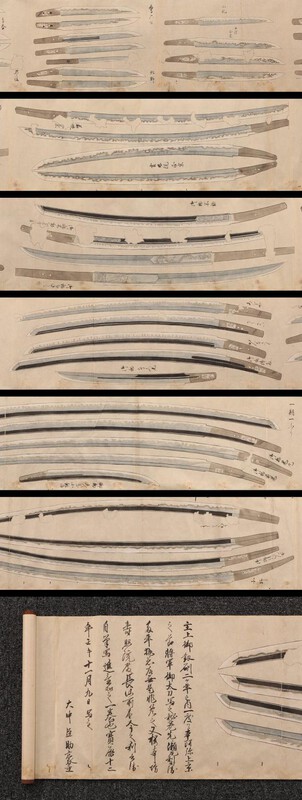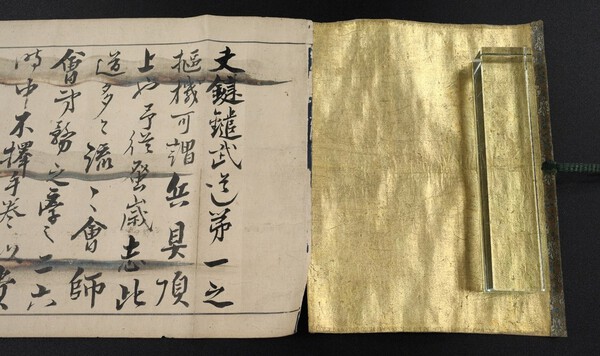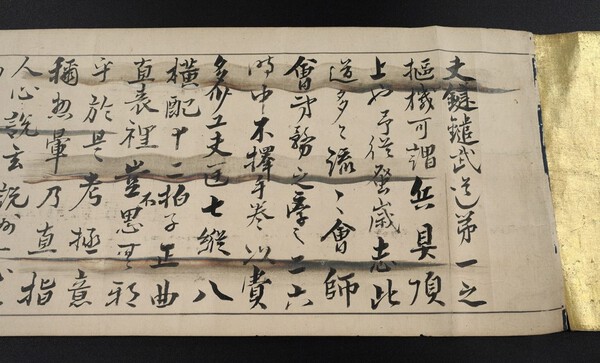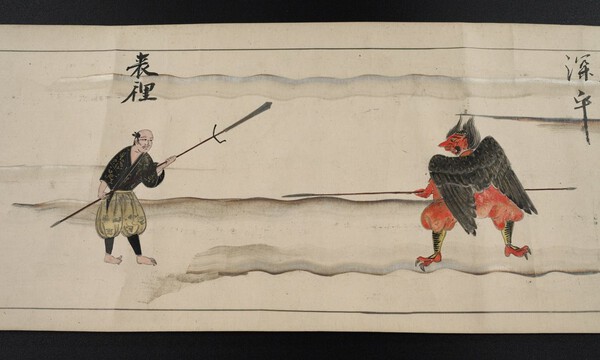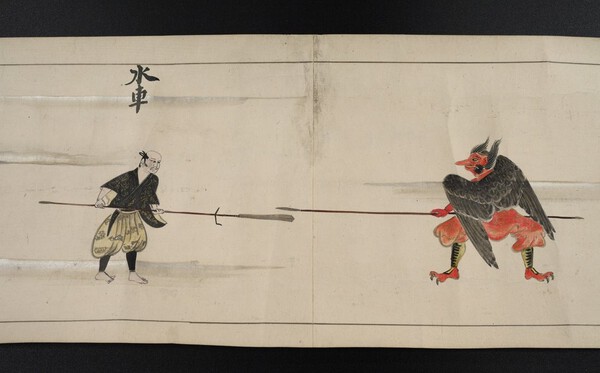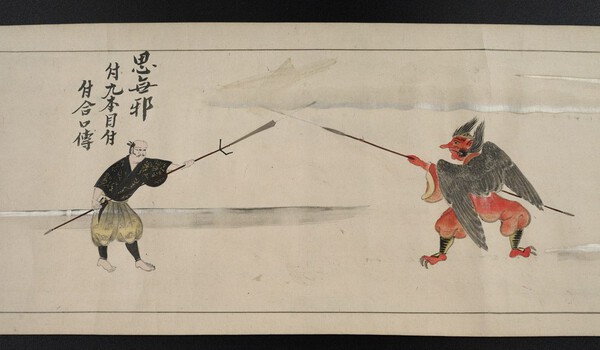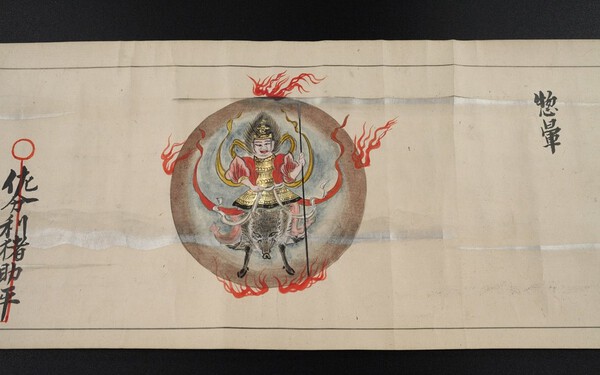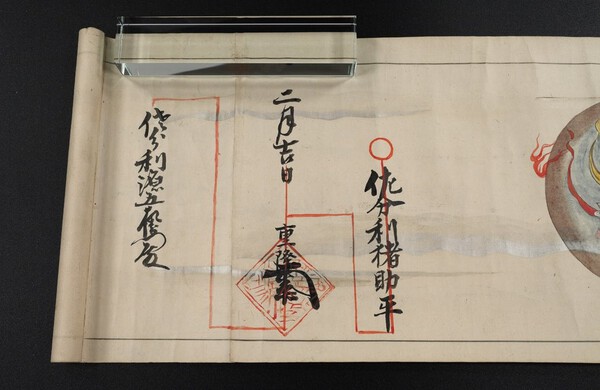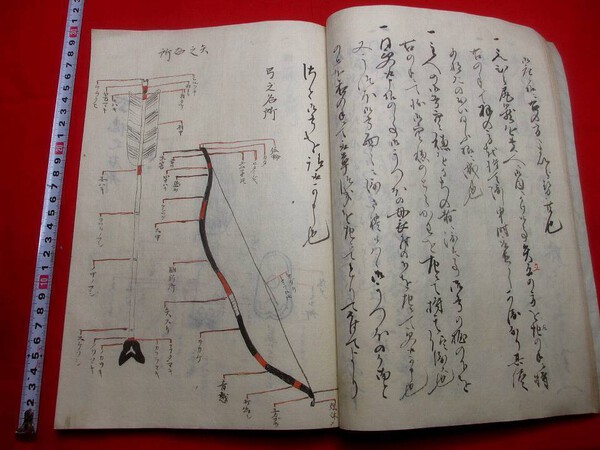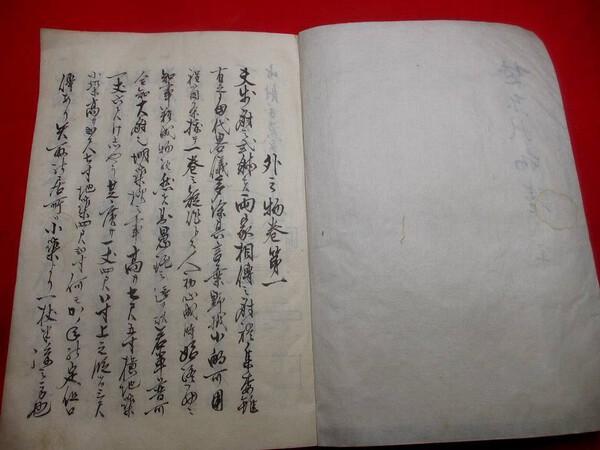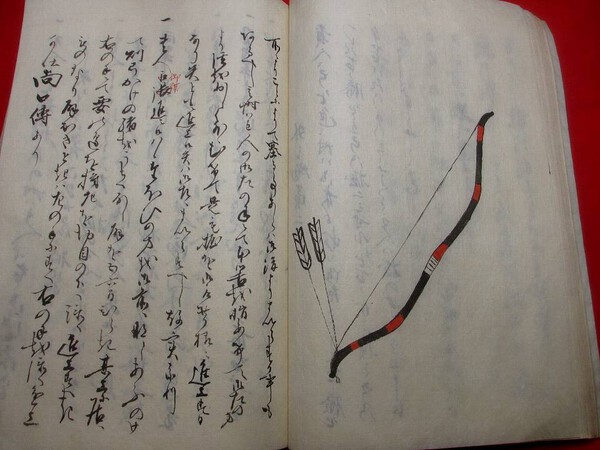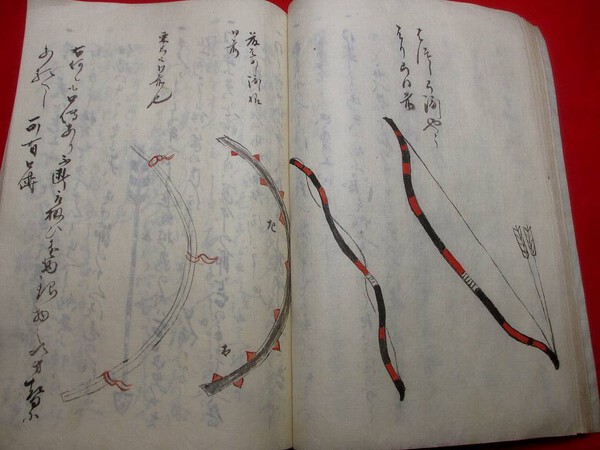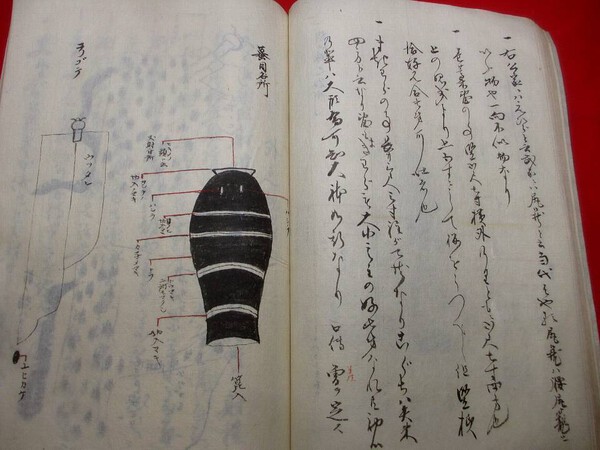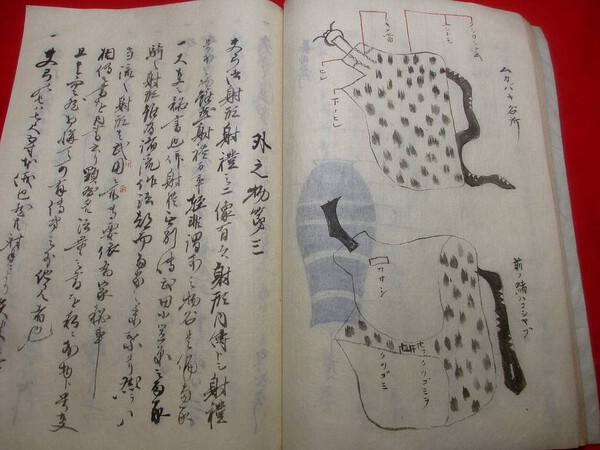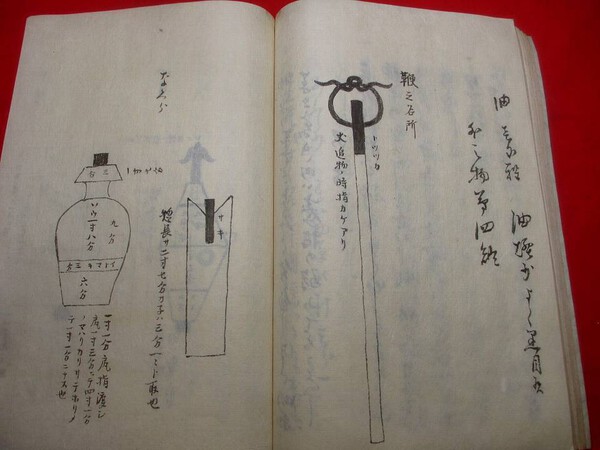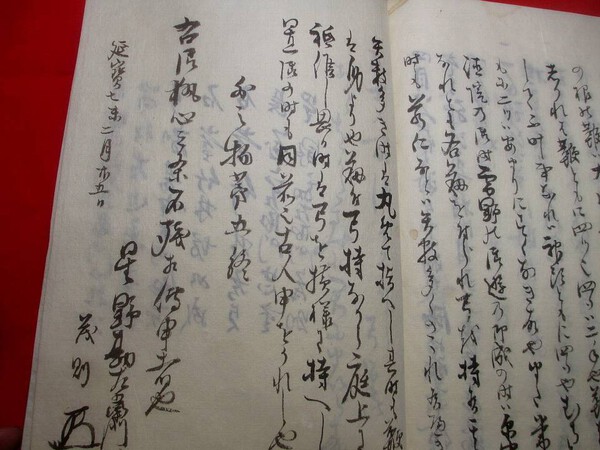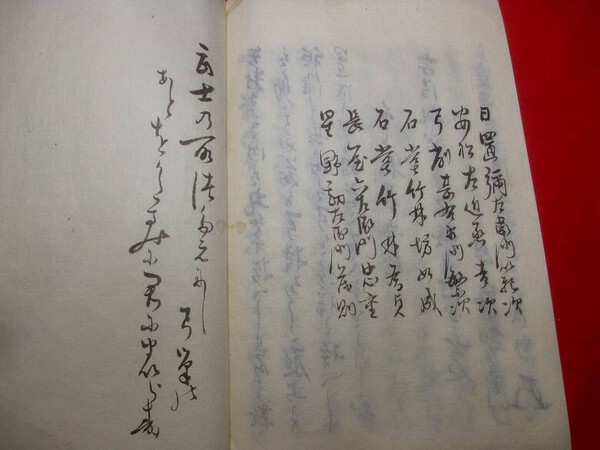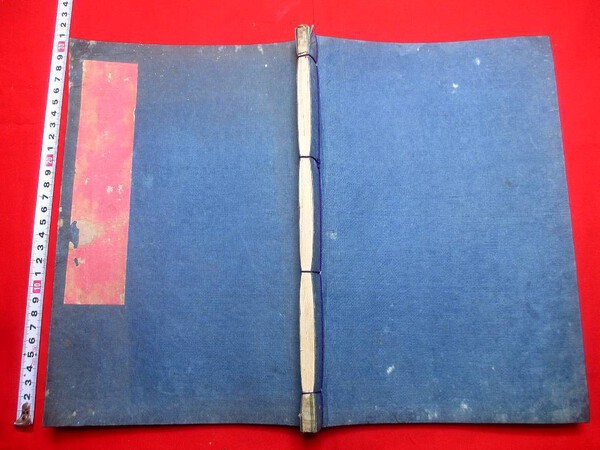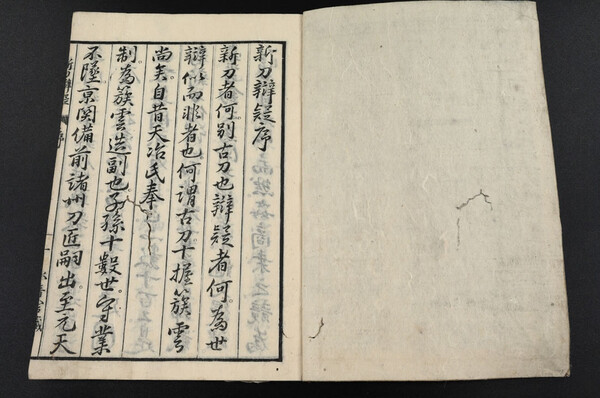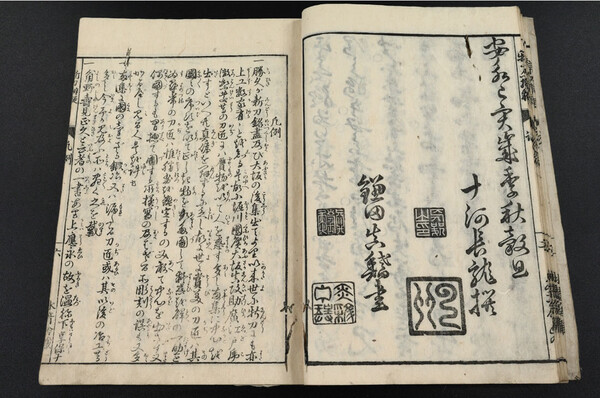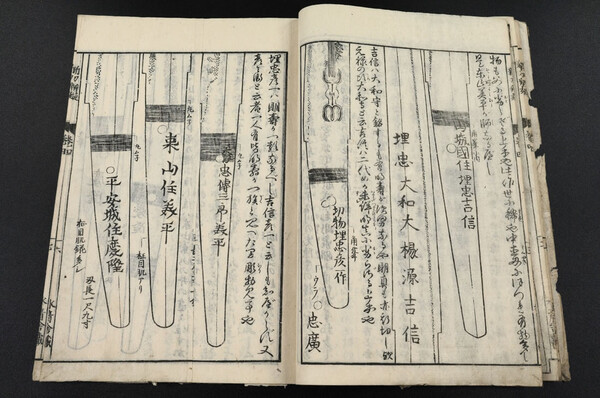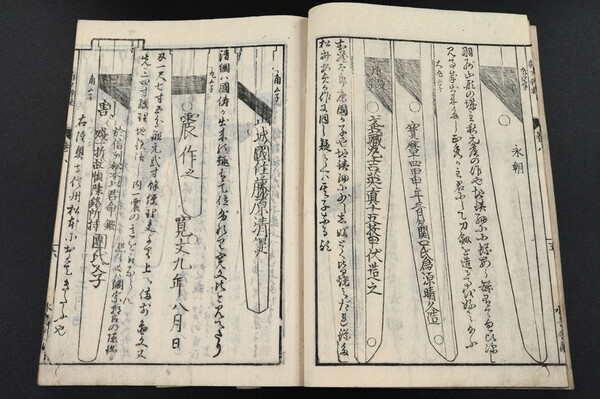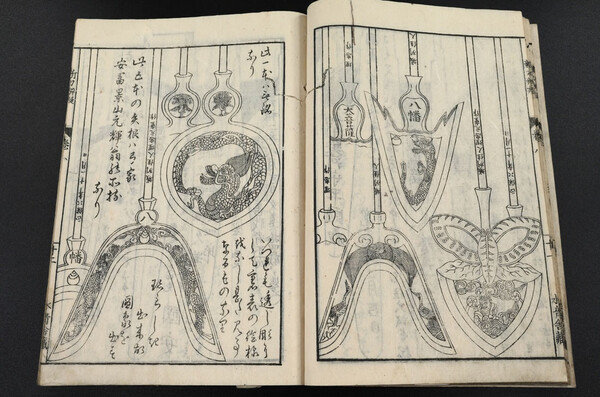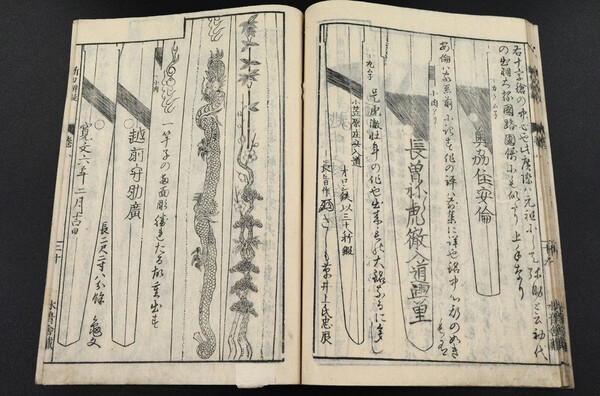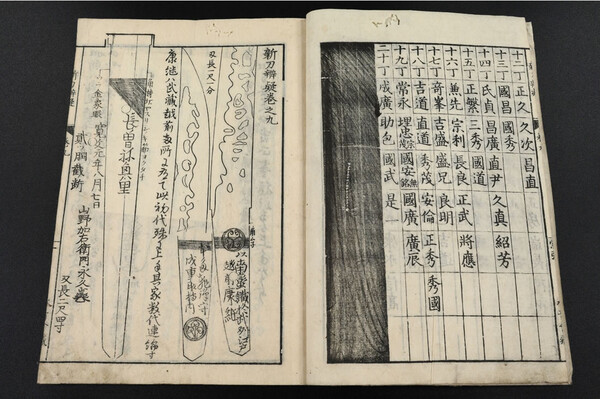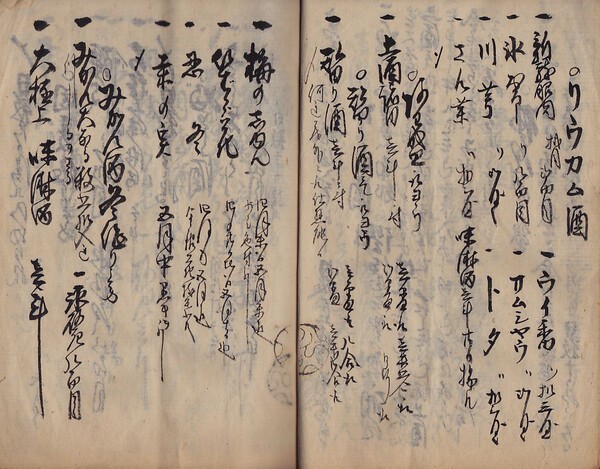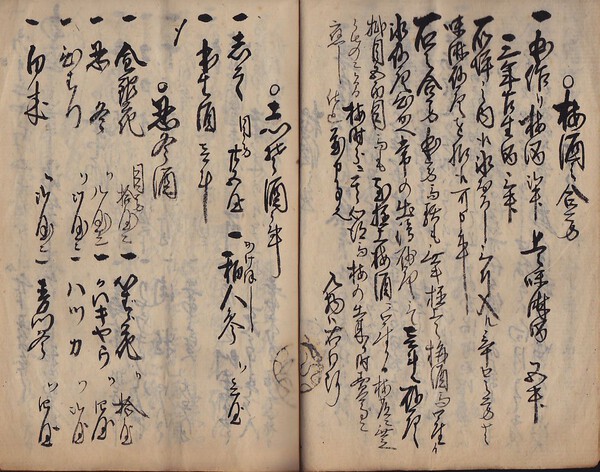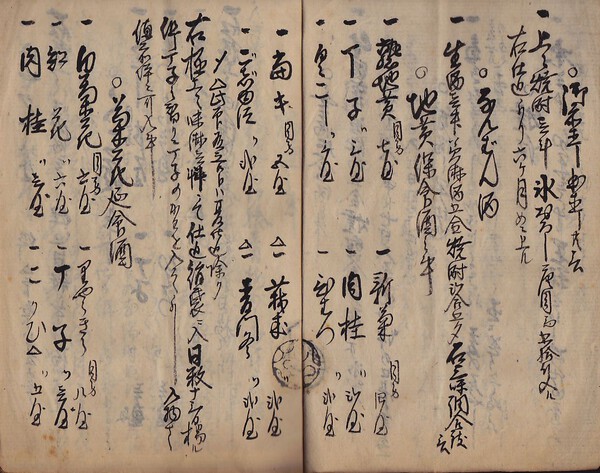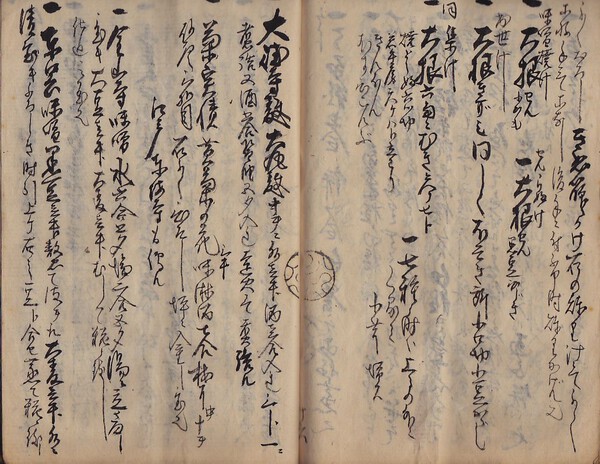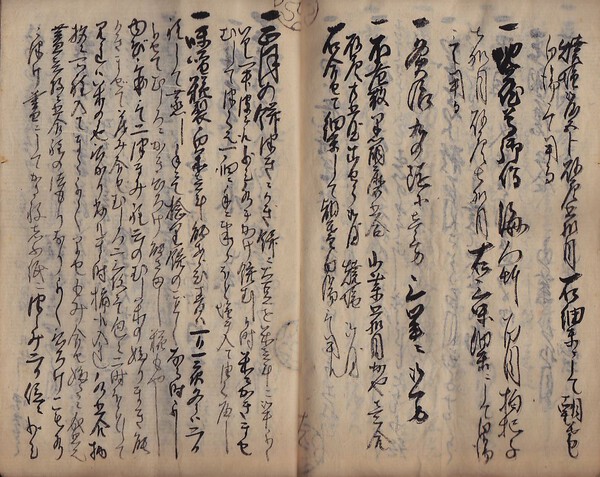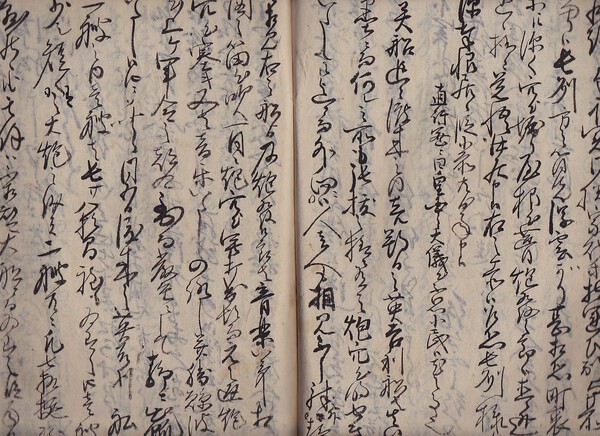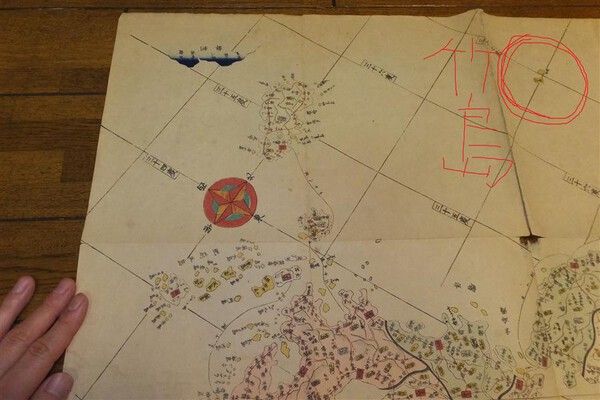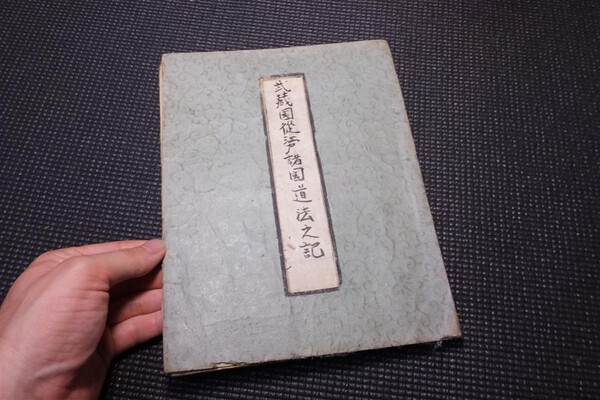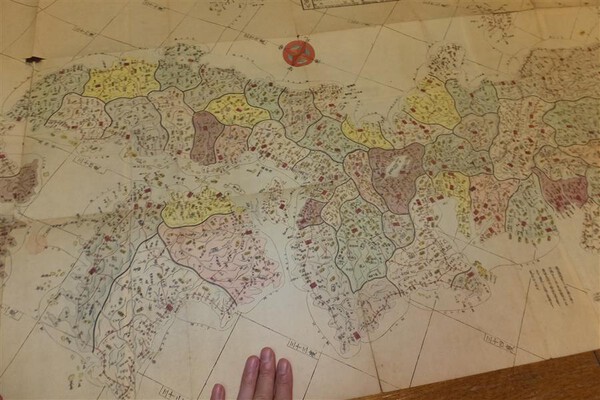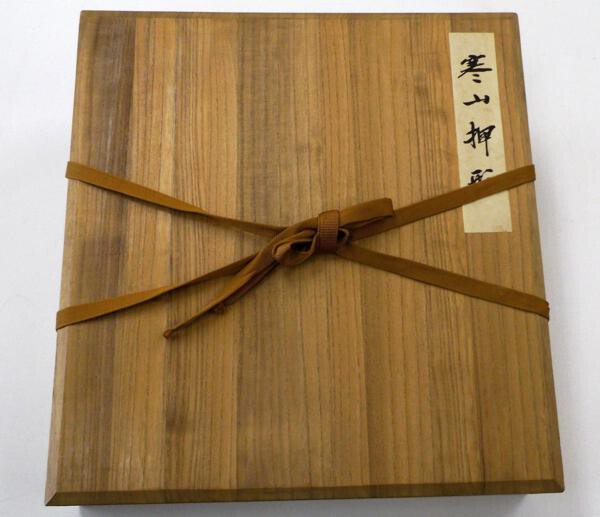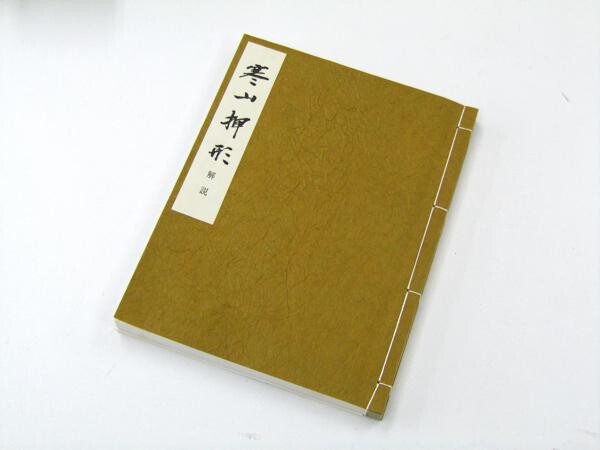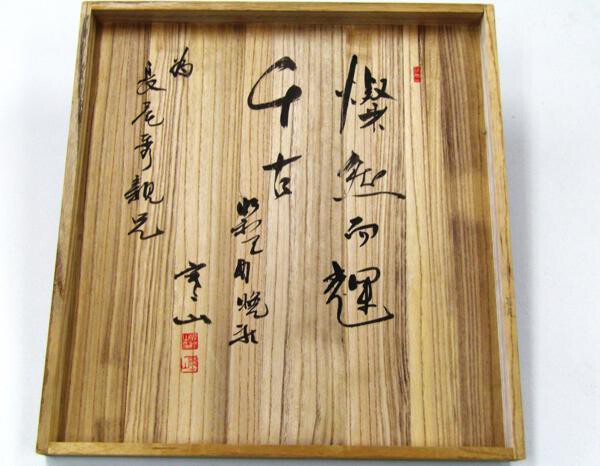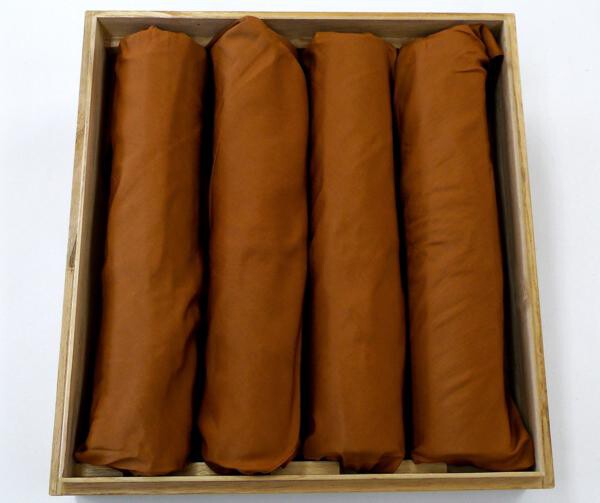-
Posts
361 -
Joined
-
Last visited
-
Days Won
3
Content Type
Profiles
Forums
Events
Store
Downloads
Gallery
Everything posted by Randy McCall
-
Wishing you all the best, Markus! Here's to a wonderful fall!
-
Very short notice, but I just found this auction where a 1763 (Horeki 12) scroll listed as being Honami work will come up for final bidding July 18, on Yahoo.jp. Condition is poor to fair: aged, stained, wear, tears, areas of surface medium missing so some images compromised. 963 cm x 28 cm. Early bidding is relatively brisk, at 11,500¥ As of time of posting. http://page2.auctions.yahoo.co.jp/jp/auction/b211771571
-
Some time back I mentioned I had picked up a copy of the 1936 Kajihei Shingi Oshigata at an estate auction, and was trying to track down its background. Markus Sesko kindly took time to look it over and was able to supply some details. Any errors below are mine in transcription, and not Markus'. In earlier years Sugihara Shôzô had written the "Kajihei Kotetsu Meishu" (no publishing date available to me), focusing on Kajihei's imitations of Kotetsu blades. The Osaka Token Kai of the time believed more information on his fakes (not well known at the time) was needed, and so produced the Kajihei Shingi to expand on the Meishu. I should mention that while some bibliographic databases attribute the work generally to the Osaka Token Kai, others list the author as Kashima Isao... I have no information on this gentleman. The Kajihei Shingi contains a CV for Kajihei, as well as a short historical view of the events of his time. This is followed by many oshigata -- the book is about 200 pages (100 leaves), 150 or so averaging three to five oshigata on each page, with notes -- on both his fakes and authentic signatures for comparison. All in all a very specialized and intriguing curio. I have been unable to locate another copy through any Western sources or databases. I believe both of the above-mentioned volumes have been supplanted by the 1984 Kajihei Oshigata, written by Suematsu Ikeda For those who might be interested, I've located a digital copy of the Kajihei Shingi on the National Diet Library site. Unfortunately the images are black and white and very grainy, but at least it's free http://dl.ndl.go.jp/info:ndljp/pid/1144559?itemId=info%3Andljp%2Fpid%2F1144559&__lang=en
- 1 reply
-
- 1
-

-
Of interest for its rarity, an Edo period hidensho (secret teachings) scroll of Saburi Ryu Sojutsu, with large brightly-coloured illustrations of a Tengu demonstrating / teaching techniques. The images replicate the entire scroll. One image corrected.
-
- 5
-

-
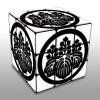
Analyses Of Wounds By Swords In Medieval Japan
Randy McCall replied to BIG's topic in General Nihonto Related Discussion
Very interesting. Several years back I did a series of posts on similar bio-archeological research, though they were drawn from battlefield sites. Links to source material are included in the articles. Forensics: Weapon-related trauma on Seiyokan cranial remains, Kamakura: http://www.tameshigiri.ca/2014/03/26/forensics-weapon-trauma-seiyokan-cranial-remains-kamakura/ Forensics of Kamakura battle remains 1333 (includes link to the documentary Warrior Graveyard): http://www.tameshigiri.ca/2013/12/29/weapon-effects-forensic-kamakura-1333/ The Honourable Second: Forensic evidence of medieval kaishaku in seppuku: http://www.tameshigiri.ca/2014/02/08/forensic-evidence-of-medieval-kaishaku-in-seppuku/ -
And more so, from a post I made a couple years ago, including some examples of a 1937 cold-weather aratameshi organized by the publisher of Token Kogei (Sword Industry) magazine Omura Kunitaro, at the request of the Japanese Army, who was losing a lot of blades to the Manchurian winter. Links to source material included in the article. Aratameshi: Testing blades to destruction: http://www.tameshigiri.ca/2014/02/15/aratemshi-testing-blades-to-destruction/
-

Death & Injuries In Samurai Battles
Randy McCall replied to Gordon Sanders's topic in General Nihonto Related Discussion
There is an excellent article (sadly, the only source I know is behind a paywall): "War and Injury: The Emergence of Wound Medicine in Medieval Japan" https://www.jstor.org/stable/25066385?seq=1#page_scan_tab_contents which lists a large body of medical knowledge regarding treatments for battlefield injuries, including both surgery and Asian traditional natural medicine, from the period of the 14th and 15th centuries. Much of the information in the article is drawn from two classic texts: the Kinso Ryjisho (physical medicine) and the Kiho (natural medicine). The following is the table of contents from both documents. Kinso ryjisho 1. Knowing whether the wound is fatal 2. The ten good and the ten bad signs 3. Stopping the blood from a wound 4. Knowing the pain/agony of a wound 5. Stopping "blood awryness" (chiyoi, losing one's senses, going mad) 6. Putting back in viscera that have come out 7. Making blood seep from a wound that is not seeping 8. Expelling blood that has lodged in the body 9. Opening the mouth of a wound 10. Stopping delirium as a result of the wound 11. Extracting an arrowhead that has become lodged 12. Mending shins, forearms, and trunks that have been severely cut 13. Mending muscle/sinew that has been cut 14. A separate oral transmission for mending necks that have been cut 15. Where wounds are drawing away life 16. Fixing where [an arrowhead?] is lodged in the mouth of an injury 17. So that wounds are not swollen and not suppurating 18. A wound where the top [surface] is healed but the base [underneath] is not healed 19. Treating/curing wind-stroke syndrome and kakke [resulting from] the injury 20. Healing wounds that have become suppurative (kusaritaru) 21. Healing [treating] for when wounds are leading towards kakke 22. Treating for arrow-piercing where the mouth of the injury is narrow, and the base [of the injury] is deep 23. Where the mouth of the wound is rolled inwards, and [the person] will die 24. How to know the depth or shallowness of a wound 25. Special wounds that suddenly heal in a night 26. Wounds where the flesh suddenly heals and grows back 27. Healing wounds that have not healed over a long period 28. Resurgence/flaring up of old wounds as a result of improper activities 29. Insects [maggots, worms] appearing in a wound 30. Being struck with a poisoned arrow 31. Mending genitals that have been cut 32. Washing wounds 33. Healing wounds without [leaving] scars 34. Making indented scars flat 35. Regrowing [flesh] where flesh has been lost 36. Treating where the healed mouth of a wound has become raised 37. Getting rid of (otosu) the "sweet [raised?] flesh" (amaniku) on a wound 38. Making attractive a wound [scar] on the head 39. Brains protruding from a wound to the head 40. When legs are unsteady as the result of a head wound 41. When someone is bent/curled up due to the wounds 42. Blood coming from the throat as a result of a wound 43. Treating for when there are sudden changes in the eyes [due to] pain within the body [from] the injury 44. Wound medicine 45. [Foods] poisonous and medicinal for wounds 46. Treating wounds with moxibustion 47. Having been wounded, where death is certain 48. Wounds to the [toe] nails 49. Purgative medicines [to relieve constipation as a result of a wound] 50. Treating with candock 51. Making seep from an arrow-shot wound blood that is not seeping 52. Stopping life from coming out of a wound 53. Infusions for wounds 54. Treating for when the head has been crushed and the brains are coming out 55. Ointments/salves Kiho 1. Stopping bleeding 2. Medicines that are to be imbibed internally 3. Infusions 4. Stopping aching 5. Moxibustion 6. The width of a wound 7. Making blood flow/run 8. Akada powdered medicine 9. Stopping pain within the body 10. Putting back in viscera 11. Knowing the depth of a wound 12. Bruise wounds 13. Treatment for when the mouth of the wound has dried/hardened [i.e., is not moist] 14. So that a wound will not become swollen 15. Treating the pain of a wound 16. Extracting a lodged arrowhead 17. Treating [with?] dried insect 18. Treatment for wounds to the eye from an arrow 19. Healing medicines for wounds 20. Treating for when the eyes do not see 21. Putting back in brains that are protruding from the head 22. Treating with candock 23. Treating crushed/smashed bones 24. The second initiation, by medicine 25. Not causing scars from the wound 26. The mouth of a wound becoming weepy 27. Constipation resulting from the injury 28. Treating [limbs? parts?] that have been deeply cut 29. Treating bones that have been cut 30. Treating wounds that have become swollen 31. Treating old wounds where the person has damaged what had been repaired 32. Reducing where the mouth of a wound has become raised 33. Wounds [suffered] when being drunk on rice wine 34. Treating wounds from being bitten by a wild boar or deer 35. Seeing whether someone is dead or alive 36. Repairing sinews that have been cut 37. Seven Medicine compound 38. Black Medicine (kurogusuri) 39. Green Medicine (aogusuri) 40. White Medicine (shirogusuri) 41. Incense medicines 42. Decocting/broiling five incenses 43. Treating the wounds -

Death & Injuries In Samurai Battles
Randy McCall replied to Gordon Sanders's topic in General Nihonto Related Discussion
Stones were often used as peasant weapons... I am given to understand the post (linked below) recounts the details on monument to a 1768 battle (or an uprising) by peasant forces; a sling and it's use is described. My Japanese isn't up to providing anything close to a translation to be sure this is a correct reading though. Perhaps someone with more experience can confirm. http://ameblo.jp/no-bon/entry-11619873453.html -

Death & Injuries In Samurai Battles
Randy McCall replied to Gordon Sanders's topic in General Nihonto Related Discussion
As the stats being quoted needed some context, I went back and looked up the discussion in question on Iaido-L https://listserv.uoguelph.ca/cgi-bin/wa?A0=IAIDO-L Dr. Friday's comment containing the information you mention appears in a discussion thread called "Battlefield Realizm". To view the entire thread, go here: https://listserv.uoguelph.ca/cgi-bin/wa and enter Battlefield Realizm in String, making sure Sub-String is checked. The discussion focused on how real modern impressions of Japanese battlefield combat are. Dr. Friday's post was in response to a section of the discussion on whether samurai primarily used their swords in battle, and on the effects of firearms on Japanese strategies. The statistics he uses are meant to show that the bow, and later the gun, were actually the main weapons of war, with other longer ranged weapons coming into play (spears and such), before swords would be used. Data quoted wasn't total casualties for the time periods listed, but information from a select group of reports where number-and-type of wounds received were described. While the original post by Dr. Friday seems to have been deleted from the thread, it still exists as a quote in a response from another member of Iaido-L. Link to full post and the quote of Dr. Friday: https://listserv.uoguelph.ca/cgi-bin/wa?A2=ind9911&L=IAIDO-L&P=R4660&1=IAIDO-L&9=A&I=-3&J=on&d=No+Match%3BMatch%3BMatches&z=4 I've extracted the quote below, removing all the line carriage markers and other listserv items On Fri, 5 Nov 1999 11:39:33 +0900, Karl Fridaywrote:They lost in part because the gov't army outnumbered them, and in part because they approached the fighting with a largely traditional samurai mindset andtactics. The main drama of the rebellion, and the principal militaryhistory lesson to come out of it, wasn't so much that machine guns candefeat swordsmen, but that the era of the hereditary, professionalwarrior was over--peasant troops could easily be more than a match for samurai.Was this plain stupidity or was it "makin' a statement"?Not the knowledge of the fact that they would be heavily outnumbered, thiswas not much to be done about...But fighting in a "traditional" way?Hadn't it been proved several times earlier in history that matchlock-meneasily could wipe out Samurai cavalry? Hadn't they learnt the lesson,didn't they have the knowledge, or was this a mass-suicide?I think you could call it a little of both plain stupidity and "makin' astatement." As far as matchlocks vs. cavalry providing lessons, therereally isn't much relevance.First, this whole picture of Light Brigade style charges against gunners is dramatically overblown; there's a ton of new research coming out thatshows that guns didn't dramatically alter the shape of Japanese warfare, theysimply replaced the bow and arrow. An analysis that I was just looking atthis morning, of documents reporting battle wounds, for example, shows thatbetween 1500 and 1560, out of some 620 casualties described, 368 were arrowwounds, 124 were spear wounds, 96 were injuries from rocks (thrown byslings or by hand), 18 were sword wounds, 7 were combined arrow and spearwounds, 3 were combined arrow and sword wounds, 2 were combined rock andspear wounds, and 2 were combined rock and arrow wounds. Between 1563and 1600 (after the adoption of the gun) some 584 reported casualties breakdown as follows: there were 263 gunshot victims, 126 arrow victims, 99spear victims, 40 sword victims, 30 injured by rocks, and 26 injured bycombinations of the above (including one poor SOB who was shot by bothguns and arrows and stabbed by spears, and one who was speared, naginata-ed,and cut with a sword). In other words, long distance weapons (arrows androcks) accounted for about 75% of the wounds received in the pre-gun era,and about 72 % (arrows + guns + rocks) during the gunpowder era. Which isto say that "traditional fighting" does not appear to have been heavilycentered on close-quarters clashes of swords or even of spears, except inliterary sources.Second, and more to the point, what matchlocks could do to and for 16thcentury armies is pretty much irrelevant to the issue in 1877. As I saidearlier, even Saigo's rebel army made some use of modern firearms--and ofcourse they also had matchlocks, as well as swords and such. They evenhad some experience in modern Western tactics and drill, although they weren'tcommitted to this new paradigm to the extent that the gov't army was. Thebig shock/drama/lesson though, was not so much tactics and/or hardware perse, as the fact that an army of samurai--hereditary, professionalfighters--could be beaten by one composed of conscripts.The whole episode was, in fact, essentially suicidal from the outset, andSaigo knew it. It began when some of his followers took it ontothemselves to raid a gov't army, and Saigo fatalistically decided that the die hadbeen cast. He had already decided that he was something of an anachronismanyway (which is why he had retired to Kyushu in the first place) andseems to have looked on this as an opportunity for a glorious death.Karl FridayDept. of HistoryUniversity of GeorgiaAthens, GA 30602ph. (706) 542-2537 A couple of years ago I did a blog piece covering parts of this issue, using bio-archeology research done by several scientists as a base. If you're interested: "The debate on Japanese swordsmanship based on skeletal trauma": http://www.tameshigiri.ca/2014/04/25/the-debate-on-Japanese-swordsmanship-based-on-skeletal-trauma/ -
In cultural anthropology there has been a long history of European explorers and researchers applying their preconceptions and biases as to what certain symbols from older cultures -- religious, military, cultural or "mystical" -- meant. In the sciences Confirmation Bias is something that has to be continually guarded against. Not to say this is what's going on here, but it's possibility which can't be discounted. It would be an interesting study for someone to go back and examine pre-Christian-contact -- or at least pre-Christianity-becoming-widespread -- mon and tsuba designs to see if some of the base patterns exhibited in the museum collection existed in kodogu prior to Christianity becoming well established. Or even just in certain older schools of artistry, which -- one would think -- would have an influence in metal artistry as well. This would at least present a baseline of which designs might come from cultural heritage, and which from outside influences.
-
A little more focused question this time, for those who may have seen these volumes: Between the Kajihei Oshigata by Suematsu Ikeda (1984, two volumes), and the Kajihei Shingi Oshigata by the Osaka Tokenkai (1936), which of the two is considered the better or more complete reference? If there is a difference, what areas are covered in one that are not in the other? For those not familiar with these, both books deal with the works of Hosoda Heijirô Naomitsu (細田平次郎直光), ..."who is better known under his pseudonym “Kajihei” (鍛冶平), the name under which he focused on forgeries of shintô, shinshintô and also of kotô blades after the ban on swords in 1876... ...Naomitsu alias Kajihei was a student of Jirô Tarô Naokatsu (次郎太郎直勝, 1805-1858), the son-in-law and successor of the famous shinshintô swordsmith Taikei Naotane (大慶直胤, 1778-1857)." Quote from Markus Sesko's blog posting: https://markussesko.com/2013/11/10/a-natsuo-motif-on-a-kajihei-blade/ I understand the Nihonto Koza also dedicates a section to the forgeries of this smith (though I'm not sure how extensive), which is suggestive both his level of skill and the number of his forgeries.
-
- 1
-

-
In nosing around some online estate sales, I've manage to pick up several interesting books, quite economically. I'm looking for any pointers towards where I might find personal or commercial translations, summaries or indexes. Or general commentary from members on the usefulness or applicability of the books in question. First up, a copy of the Sun en zu sanshū tōkō no kenkyū by Yasumasa Fukae (1976), in excellent condition (slipcover and all). Secondly, a nice copy of the Kōzu Haku Oshigata by Honma Junji, in slipcover. Finally, and perhaps somewhat more unusual, is a Showa 14 copy of the Kajihei Shingi Oshigata by Kashima Isao (thanks to Markus for helping to pin it down). Fascinating old book, in excellent condition; the pegged cover has taken some damage, but otherwise it is just aged with a few minor page stains. Accordion folded leaves inside a handsome tooled set of Japanese-style covers, some 200-300 pages in length... hundreds of oshigata which appear to be direct photos from someone's notebook, including handwritten notes, illustrations and pointers. I understand there is a 1984, two-volume version of the Kajihei by Suematsu Ikeda. Any comments or thoughts on the difference between the two?
-

Upcoming Manuscript Auctions
Randy McCall replied to Randy McCall's topic in Auctions and Online Sales or Sellers
Enpo 9 (1679) handwritten and illustrated manuscript book on kyudo, with some images painted. Author's name rendered by the seller as Hoshino Kanzaemon. The book is 17 pages in length. Condition: Excellent + for a the given 1679 copying date. Auction ending: June 5th Link: http://www.ebay.ca/itm/2-20-Japanese-KYUDO-samurai-archery-hand-painted-BOOK-/252406337941?hash=item3ac4971195:g:F4gAAOSwn8FXSvzj Sample pictures: -

Upcoming Manuscript Auctions
Randy McCall replied to Randy McCall's topic in Auctions and Online Sales or Sellers
1833 reprint of 1799 慶長以來新刀辨疑 "Keichō Irai Shintō Bengi", complete in nine volumes. Hundreds of oshigata by great smiths of the Shito period Condition: Fair - aged, stained, tears, wear, insect damage Auction ending: June 4th Link: http://page14.auctions.yahoo.co.jp/jp/auction/s490827820 Sample pictures: -

Tokubetsu Juyo 2016 Results
Randy McCall replied to Darcy's topic in General Nihonto Related Discussion
While I can't speak with authority on this topic, I have to say I'm unaware of it being a widespread practice, though with many samurai being inveterate diary-keepers and also proud of their blades it wouldn't surprise me if some did. Certainly there are individual family or clan histories of the battlefield feats of great warriors / clan leaders which lionize the qualities of their blades. Most these histories are somewhat-to-very-suspect when it comes to facts, however. Perhaps Markus Sesko has more detailed information? Perhaps more useful in this regard are official reports from --- or messages sent during -- actual battles, recording the actions of individual samurai and recommending reward based on these actions -- the equivalent to "being mentioned in dispatches" of more modern times. Some of these reports honour the quality of the weapon owned by the samurai in question. Being official reports for reward, they are much more likely to hew closer to the facts than personal or family histories. I am unaware of anyone compiling these reports with an eye towards matching them with existing nihonto, however. In the Bakumatsu era, at least one smith was tracking the effectiveness and durability of nihonto in use; Suishinshi Masahide, the "founding father of the Shinshinto era", was researching this topic to prove the superiority of his technique of forging blades over more florid styles. To quote from Nihontocraft.com: Suishinshi Masahide and the Functionality of Nihonto: http://www.nihontocraft.com/Suishinshi_Masahide.html "...Masahide gained this knowledge empirically through repeated eye-witness accounts and reliable sources concerning swords in actual use. The following are 25 incidents that Masahide mentioned, in which blades with a "Hade" style hamon were broken. It is a direct translation.." Almost half of the 25 incidents record blades used in combat situations, of one type or another, rather than swords being broken or damaged during test cutting, or even just by simple accident. -

Upcoming Manuscript Auctions
Randy McCall replied to Randy McCall's topic in Auctions and Online Sales or Sellers
19th century handwritten manuscript recipe and directions on brewing sake, title translated by seller as Meishu Kata "The Way of Sake". For our home-brewing members who want something a little different. Condition: Fair - aged, stained, wear. 46 pages of notes with full margins. Auction ending: June 2nd Link: http://www.ebay.ca/itm/Orig-Japanese-Hand-Written-Manuscript-Book-Japanese-Sake-Brewing-Recipes-19thc-/231956588552?hash=item3601b0a808:g:omAAAOSwoJZXRqT2 Sample pictures: -

Upcoming Manuscript Auctions
Randy McCall replied to Randy McCall's topic in Auctions and Online Sales or Sellers
1863 handwritten report on the Battle of Shimonoseki Straits, title rendered by the seller as Nankan Gai Bunsho. Seller's comment: "This was a naval engagement between foreign ships and the Choshu Navy and part of the Shimonoseki Campaign in which the United States, England, France, and Holland sent warships into the Straits of Shimonoseki to attack the naval vessels under the control of the Lord of Choshu. The Choshu Samurai had taken up the position of SONNO JOI = "Expel the Barbarians," and wanted all foreigners removed from Japan. The Choshu Clan, under Lord Mori Takachiba, ordered his Samurai to fire upon any foreign ships entering the Straits of Shimonoseki. The first attack was against the US merchant steamer SS Pembroke. Following the attack, President Lincoln ordered the US Frigate USS Wyoming into the Straits to attack the Choshu Samurai navy. Later, French and British warships were sent into the area to protect their merchant ships. A historic manuscript report with details of the damage done to ships and sailors killed or injured." Bidding is already lively (16 bids), with the latest bid at the time of this posting being $550 USD. 53 pages, text only, in Fair condition - aged, stained, wear. Seller holds 100% positive feedback with more than 8000 sales. Link: http://www.ebay.ca/itm/Orig-Japanese-Manuscript-Report-on-Battle-of-Shimonoseki-Straits-July-1863-/231953901243?hash=item360187a6bb:g:wOsAAOSwSWJXQxdB Auction ending: May 30th Sample picture (Seller reports using scanner, so images are clipped. Actual page size 7.25 inches by 10, with full page margins) -

Looking For Sources On Creating Oshigata
Randy McCall replied to Randy McCall's topic in General Nihonto Related Discussion
Appreciated, Ken! -

Looking For Sources On Creating Oshigata
Randy McCall replied to Randy McCall's topic in General Nihonto Related Discussion
Perhaps a question which Paul Martin or another of our more experienced members could answer, which might lead to more information on quality oshigata... What are the judging criteria and considerations -- technical or artistic -- for the Oshigata Award in the NBSK's Craftsman Competition? Knowing what these are would give some insight on what such a major craftsman organization sets as the standard for such pieces. -

Looking For Sources On Creating Oshigata
Randy McCall replied to Randy McCall's topic in General Nihonto Related Discussion
Thanks Ken!. Unfortunately, his article appears to have been hosted at the To-Ken UK website, which no longer makes it available. A search under his name: "Clive Sinclare" and "oshigata" comes up dry. Ed, there are indeed some nice tips on creating oshigata on the Board, many of them suggested by Clive. I'll see about looking up the book you suggest. -
As part of my personal study and research, I've diving deeper into the study of oshigata, including the techniques of creating them and detailing what "information" or qualities they can -- and cannot -- copy from the blade. So I'm looking for any suggestions for English books, papers or articles which discuss or examine the technical art / science of making oshigata. Or books in Japanese where an English translation, summary or index is available. I do know about Inuzuka's "Token Oshigata no Giho", though I'm unclear about just how much technical information the "sections in English" covers. While I've been slowly increasing my library to allow deeper study for a while now, I'll freely admit seeing Paul Martin's post on the NBSK's Craftsman awards, with a section devoted to oshigata artists, triggered this request. Not that I have any aims (or artistic talent) in this direction, but it made me realize there are deeper levels of technical skill than I had perhaps realized. Thanks!
-

Upcoming Manuscript Auctions
Randy McCall replied to Randy McCall's topic in Auctions and Online Sales or Sellers
1849 coastal and provincial map of Japan: 148cm x 72cm. I know a number of members collect maps. Bidding heavy (45 bids), though presently for very small starter amounts (as if the date of this posting totaling 3500¥) Condition: aged, stained, fold wear, tears. Auction ending: May 26th Link: http://page3.auctions.yahoo.co.jp/jp/auction/c555783993 Sample pictures: -

Upcoming Manuscript Auctions
Randy McCall replied to Randy McCall's topic in Auctions and Online Sales or Sellers
Modern art reprint of a set of oshigata scrolls. Set of four in silk covers, with accompanying index book, in a signed and numbered presentation box. Seller states this is #44 from of limited run of 500, dated July 31st 2008 Bidding opened at 30,000¥, and as of the time of this post, there is a single bid at that price. Auction ends: May 27th Link: http://page17.auctions.yahoo.co.jp/jp/auction/v460712936 Sample pictures: -
I'm in too... let me know the final price when that settles out...



